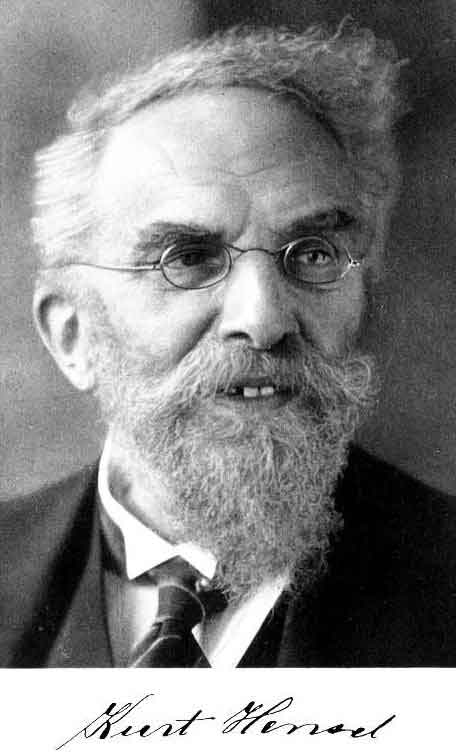.
Kurt Wilhelm Sebastian Hensel

Kurt Wilhelm Sebastian Hensel (29 December 1861 – 1 June 1941) was a German mathematician born in Königsberg, Prussia.
He was the son of the landowner and entrepreneur Sebastian Hensel, brother of the philosopher Paul Hensel, grandson of the composer Fanny Mendelssohn and the painter Wilhelm Hensel, and a descendant of the philosopher Moses Mendelssohn.
He studied mathematics in Berlin and Bonn, under mathematicians like Leopold Kronecker and Karl Weierstrass.
Later in his life he was a professor at the University of Marburg until 1930. He was also an editor of the mathematical Crelle's Journal.
He is well known for his introduction of p-adic numbers, which he invented in 1902, and itself became increasingly important in number theory and other fields during the twentieth century.[1]
See also
* Hensel's lemma, named after him
External links
* Kurt Hensel at the Mathematics Genealogy Project
* O'Connor, John J.; Robertson, Edmund F., "Kurt Hensel", MacTutor History of Mathematics archive, University of St Andrews, http://www-history.mcs.st-andrews.ac.uk/Biographies/Hensel.html .
* Helmut Hasse: Kurt Hensel zum Gedächtnis in: Journal für die reine und angewandte Mathematik 187 (1949), S. 1-13
References
1. ^ Rosen, Kenneth (2005). "4". in Emily Portwood and Mary Reynolds (in English). Elementary Number Theory: and Its Applications (fifth ed.). Boston: PEARSON Addison Westley. p. 170. ISBN 0321237072.
Retrieved from "http://en.wikipedia.org/"
All text is available under the terms of the GNU Free Documentation License


